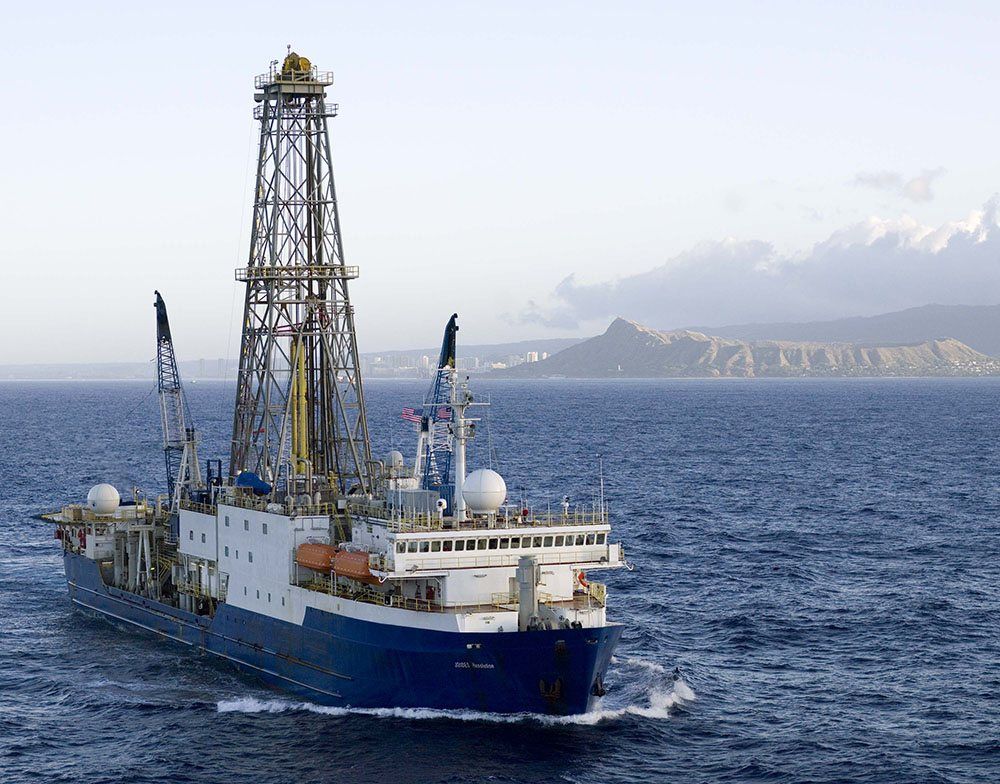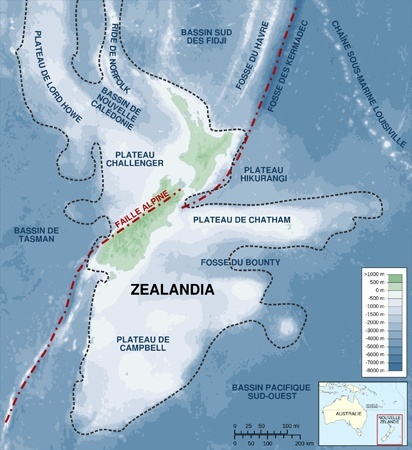
Editor’s note: An earlier version of this story noted June 27 as the expedition’s start date. July 27 is the correct date.
Little is known about Zealandia – the underwater continent half the size of Australia beneath the Tasman Sea which separates Australia and New Zealand – but an international team of scientists, including a Texas A&M University researcher, aboard the JOIDES Resolution research vessel will play a crucial role in learning more about the mysterious land mass.
On July 27, 30 researchers led by International Ocean Discovery Program (IODP) Expedition 371 Project Manager and Staff Scientist Dr. Peter Blum will set out on a two-month expedition sponsored by the National Science Foundation (NSF) and 23 other countries that support the IODP, on the Tasman Sea to drill hundreds of meters into Zealandia’s crust in water depths of up to 5,000 meters in order to extract cores and find out exactly how, when and why Zealandia came to be.

“This expedition is designed around what happened tectonically in an area that has not been studied in great detail,” Blum said. “We would like to determine when that piece of crust there started stretching, when it stopped and find out to what extent it happened.”
Researchers currently understand that present-day Zealandia broke away from Australia and Antarctica around 80 million years ago, and that a tectonic shift took place, driving the Pacific plate under New Zealand, lifting it and a ring of volcanoes above the waterline. The Scientific Prospectus for the expedition called it “the most profound subduction initiation event and global plate-motion change” in the last 80 million years.
Zealandia today is the same as the rest of the world’s continents in the sense that it is composed of continental crust and its size is determined by how far the continental crust stretches into the sea, but what makes it different than the other continents is that more than 90 percent of the continental crust is underwater.
In addition to the expedition’s primary mission of tectonic research, Blum’s team will also be conducting crucial climate change research.
Lack of exploration of Zealandia’s crust is a reason why the underwater continent has been left out of many climate change models, so the sediment samples Blum’s team recovers in the Tasman Sea will give researchers a more complete picture of how Earth’s climate has changed from the Miocene Epoch through the Pleistocene Epoch.
“We hope to find sediment packages that document those climate changes so we can put this together with other places in the world to see how these changes are related around the globe,” Blum said.
About Texas A&M and the IODP
The International Ocean Discovery Program (IODP) is an international research collaboration that coordinates seagoing expeditions to study the history of the Earth recorded in sediments and rocks beneath the ocean floor. The JOIDES Resolution Science Operator (JRSO) operates the scientific drillship JOIDES Resolution on behalf of the National Science Foundation.
The JOIDES Resolution Science Operator (JRSO) manages and operates the riserless drillship, JOIDES Resolution, for the International Ocean Discovery Program (IODP). The JRSO is based in the College of Geosciences of Texas A&M University.
The JRSO is responsible for overseeing the science operations of the riserless drilling vessel JOIDES Resolution, archiving the scientific data and samples and logs that are collected, and producing and disseminating program publications.
###
About Research at Texas A&M University: As one of the world’s leading research institutions, Texas A&M is at the forefront in making significant contributions to scholarship and discovery, including that of science and technology. Research conducted at Texas A&M represented annual expenditures of more than $892.7 million in fiscal year 2016. Texas A&M ranked in the top 20 of the National Science Foundation’s Higher Education Research and Development survey (2015), based on expenditures of more than $866.6 million in fiscal year 2015. Texas A&M’s research creates new knowledge that provides basic, fundamental and applied contributions resulting, in many cases, in economic benefits to the state, nation and world. To learn more, visit http://research.tamu.edu.
Media contact: Patrick H. Edwards, Production Editor and Web Administrator, International Ocean Discovery Program, JOIDES Resolution Science Operator
Texas A&M University. 979-845-1199 edwards@iodp.tamu.edu
For more news about Texas A&M University, see https://today.tamu.edu/.
Follow us on Twitter at https://twitter.com/TAMU




